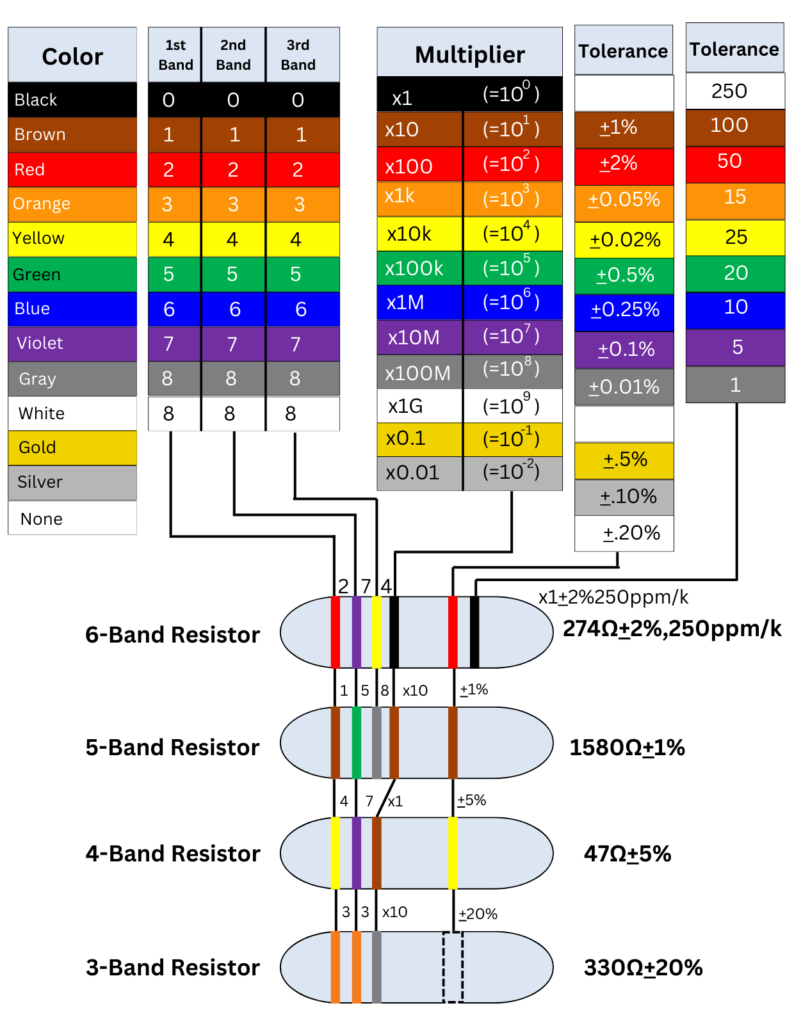A Resistor is a passive electronic component that resists the flow of electric current, reducing the current and voltage in a circuit. It is used to control, limit, or regulate the amount of electrical energy in a circuit, as defined by Ohm’s Law: V=IRV = IRV=IR, where VVV is voltage, III is current, and RRR is resistance.

Key Features of a Resistor
- Resistance:
- Measured in ohms (Ω), it quantifies the resistor’s ability to impede current.
- Construction:
- Made of materials like carbon, metal film, or wire-wound elements designed to offer a specific resistance.
- Fixed vs. Variable:
- Fixed Resistor: Has a constant resistance value.
- Variable Resistor (e.g., potentiometer): Allows adjustable resistance.
Types of Resistors:
- Carbon Composition Resistors:
- Common, inexpensive resistors with fixed values.
- Metal Film Resistors:
- Precise and stable resistors used in critical applications.
- Wire-Wound Resistors:
- High-power resistors made of wire coiled around a core.
- Variable Resistors (e.g., Rheostats):
- Adjustable resistors used for tuning and calibration.
Resistor Colour Codes :

Applications of Resistors:
- Voltage Division:
- Used to divide voltage in circuits.
- Current Limitation:
- Protect components like LEDs by limiting current flow.
- Signal Conditioning:
- Shape or filter signals in communication and processing circuits.
- Power Dissipation:
- Convert excess electrical energy into heat.
- Pull-Up and Pull-Down:
- Stabilize logic levels in digital circuits.
Advantages:
- Simple and reliable.
- Cost-effective and widely available.
- Available in a wide range of resistance values and power ratings.
Disadvantages:
- Passive component, cannot amplify or process signals.
- Generates heat during operation, which can limit efficiency in high-power applications.
